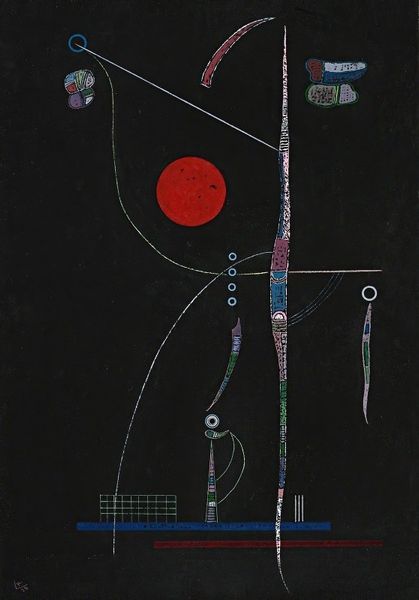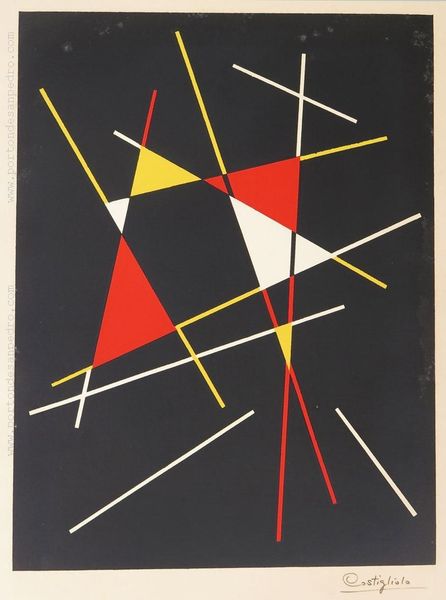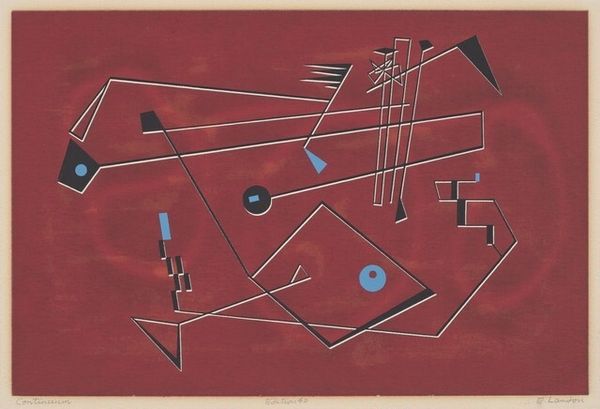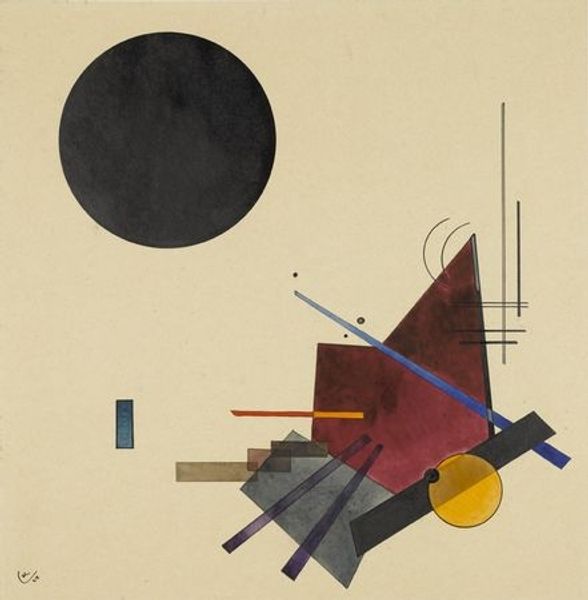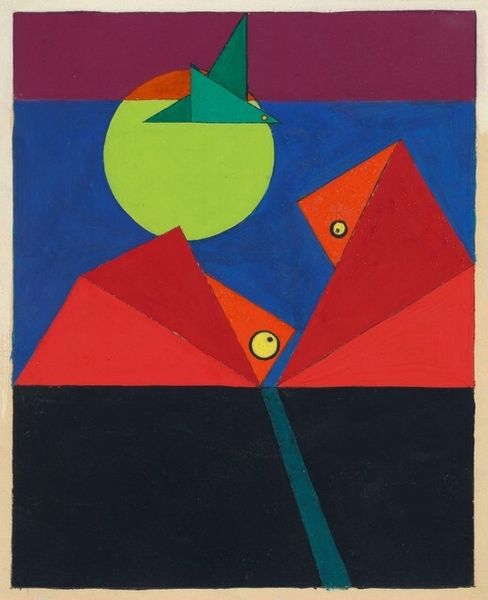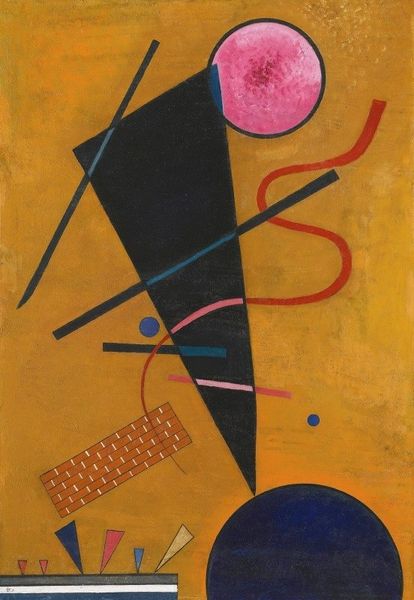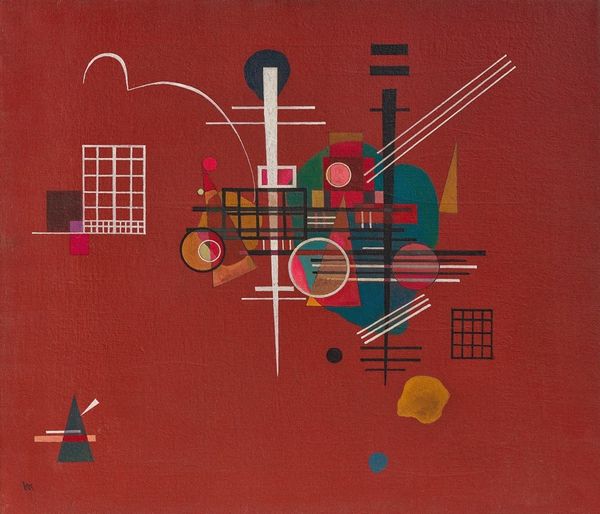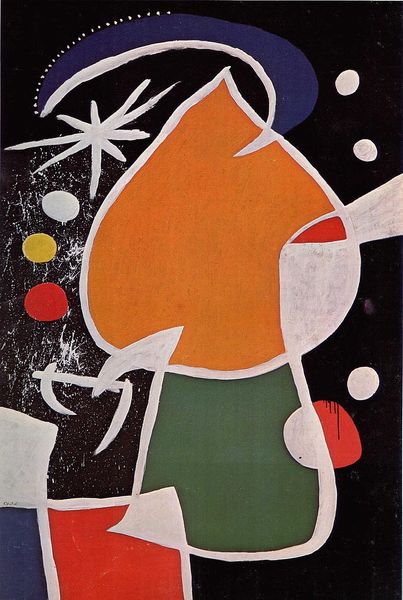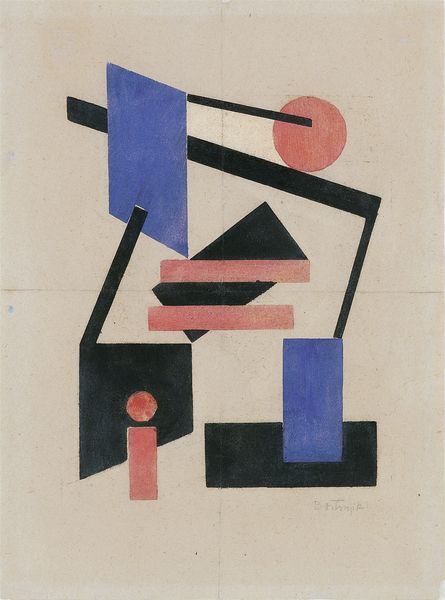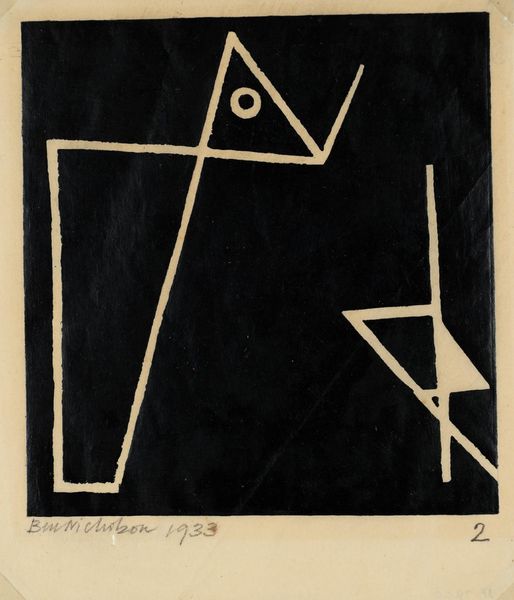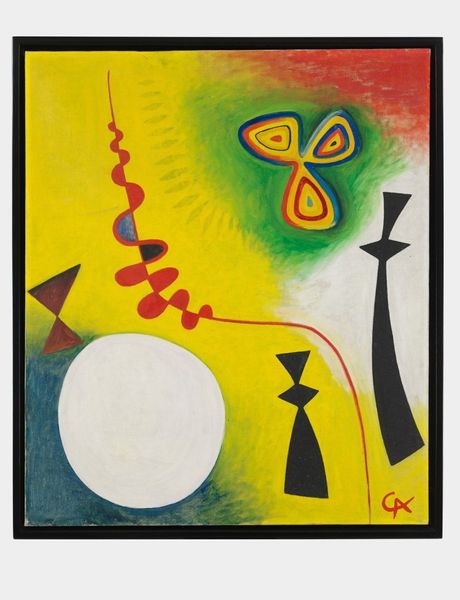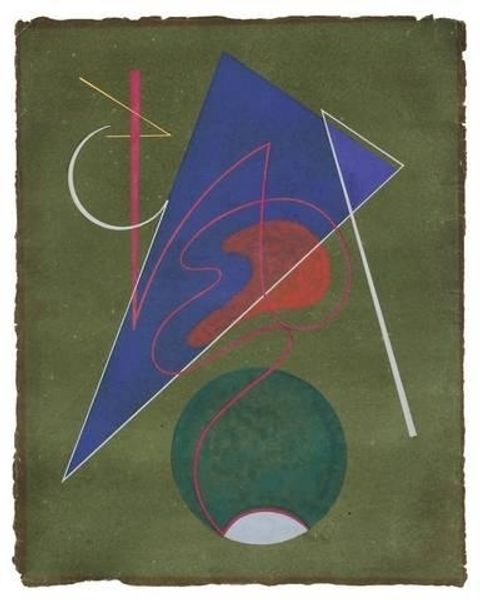
mixed-media, acrylic-paint
#
mixed-media
#
constructivism
#
acrylic-paint
#
abstract
#
geometric
#
abstraction
Copyright: Public Domain: Artvee
Curator: Right, let's dive in. Here we have László Moholy-Nagy’s "Truncated Pyramids" from 1946, a mixed media work, primarily acrylic paint, that embodies the constructivist style. Editor: It's strangely playful. The darkness is punctuated by these bright geometric shapes. Almost like cosmic building blocks floating in space. I immediately get a sense of early space exploration or atomic models. Curator: Moholy-Nagy’s work often grappled with utopian visions and technological progress, ideas swirling in the early to mid 20th century. Consider how the pyramids, symbols of ancient stability, are 'truncated,' suggesting incompleteness, or even progress leaving the past behind. Editor: That makes sense. The geometric forms held aloft on lines also resonate with constructivist ideals. These aren't just shapes, they’re representative of a futuristic society, almost instructional, wouldn’t you say? Do the lines denote vector graphics, flows of data or force? I wonder if the stark palette holds cultural resonance, maybe wartime rationing restricting available pigments? Curator: Perhaps. But I read these forms differently. Look at how the colored circles are held up as if symbols that demand to be decoded. Moholy-Nagy often infused his work with layers of meaning. The pyramids are stable foundations, but also illusions—our perception altered by shadow and form. There is also that optical confusion caused by the overlapping lines that create depth... are we meant to be reminded about hidden, unseen social structures and the fragility of certainty? Editor: Interesting idea. This brings up an interesting point around perception. His integration of mixed media encourages closer inspection, asking viewers to grapple with the realities within these illusions, which ties well with the constructivist view of art needing to build new perspectives and not only replicating life and form. The choice of colors and forms is almost propagandistic, asking its viewer to buy into his social vision. Curator: Perhaps "propagandistic" is too strong a word, but this highlights how "Truncated Pyramids" offers a unique vantage point for contemplating history and possible futures through form, line, and color. Editor: Indeed. I see this as a piece of art that invites the audience to explore societal symbolism. There's more than meets the eye with the visual dynamic, allowing its cultural framework to be a testament to enduring cultural fascination.
Comments
No comments
Be the first to comment and join the conversation on the ultimate creative platform.
